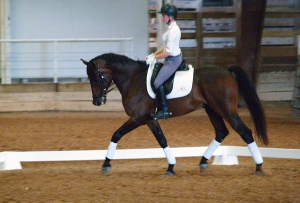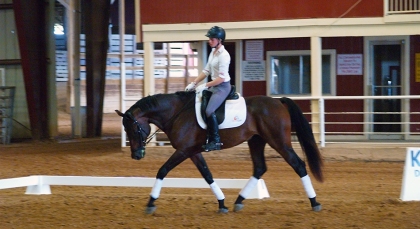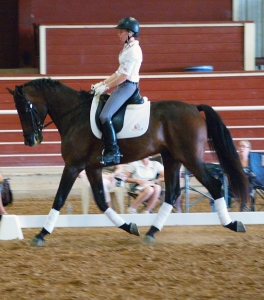 It’s the best way to gauge your horses’ health daily. No, really! If you’re familiar with your horses’ daily habits you’ll know very quickly when they’re feeling even the slightest bit off! From how their manure looks normally (and if they’re normally neat or messy in their stall), to knowing if they’re a fast eater that normally cleans up their hay or if they tend to take their time, plus all sorts of other types of behaviour they exhibit in their stall, if you’re in there every morning you’ll be the first to know when something is just not quite right. I have first-hand experience with this. Last winter I noticed one of the horses was not acting quite normal in his stall that morning, and even though his manure and eating habits were normal, he ended up having a low-grade fever and we caught an upper respiratory infection before it became anything more than a mild runny nose!
It’s the best way to gauge your horses’ health daily. No, really! If you’re familiar with your horses’ daily habits you’ll know very quickly when they’re feeling even the slightest bit off! From how their manure looks normally (and if they’re normally neat or messy in their stall), to knowing if they’re a fast eater that normally cleans up their hay or if they tend to take their time, plus all sorts of other types of behaviour they exhibit in their stall, if you’re in there every morning you’ll be the first to know when something is just not quite right. I have first-hand experience with this. Last winter I noticed one of the horses was not acting quite normal in his stall that morning, and even though his manure and eating habits were normal, he ended up having a low-grade fever and we caught an upper respiratory infection before it became anything more than a mild runny nose!- It’s a great way to get yourself in the zone for the rest of the day. If stall cleaning is part of your normal morning routine I find it’s a nice way to get in the groove, so to speak, and start the day off in a good rhythm. I generally don’t clean stalls daily, but when I do it regularly for a prolonged period of time I find myself looking forward to the quiet time in the morning with just myself and the horses before the day gets busy. It’s usually when I plan how I want my day to go and think about what I want to focus on in each of my rides.
- If you’re not a morning person, it’s vital time needed for the caffeine to kick in. You’ve probably seen those mugs, “If you’re not coffee, I’m not interested in talking to you.” Not going to lie, I’m a bit like that in the morning. I need my caffeine kick and cleaning stalls gives the coffee time to work its magic in the morning! By the time the clients arrive or my boss comes down to the barn, I’m in a much better mood!
 Trust me, cleaning stalls can actually be fun! I’m serious! In an industry that doesn’t involve a lot of instant gratification, there’s nothing I find more pleasing than stepping out of a freshly cleaned stall. It’s very satisfying!
Trust me, cleaning stalls can actually be fun! I’m serious! In an industry that doesn’t involve a lot of instant gratification, there’s nothing I find more pleasing than stepping out of a freshly cleaned stall. It’s very satisfying!- There’s rarely a better time to give your horse a little bit of loving. Aside from grooming, spending time in the stall cleaning while your horse is munching hay is a good way to get a little extra time together. I find it especially helpful when we get a new horse in the barn that’s maybe a little nervous or unsure around new people because I can just do my thing, cleaning the stall, and after a few days of the routine, the new horse will be more comfortable and start showing a little more personality.
What’s your favorite barn chore? Let me know in the comments below! And as always, thanks for reading! Don’t forget to check me out on Twitter & Instagram!

 I rode LeMac, a 5-year-old Oldenburg gelding that I’ve been working with for the past year. This spring was his first season showing and he was highly successful at Training level, with scores up to 75%. He will be making his 1st level debut this fall. Though he is only going to be showing 1st level, LeMac is working 2nd and 3rd level at home.
I rode LeMac, a 5-year-old Oldenburg gelding that I’ve been working with for the past year. This spring was his first season showing and he was highly successful at Training level, with scores up to 75%. He will be making his 1st level debut this fall. Though he is only going to be showing 1st level, LeMac is working 2nd and 3rd level at home. mportance of teaching him to maintain the proper forward energy in the lateral work. Because we focused so much on the trot work, Volker only had me do a little bit of canter the first day. LeMac’s canter is, to put it mildly, huge. It’s very uphill and comfortable, but he has a massive stride and because he is so young he’s not strong enough to really bring himself together yet. Volker was adamant about not putting too much pressure on LeMac to shorten the canter yet. He said with a horse like him, that has such a naturally HUGE stride, putting too much pressure on them too early in the canter work can ruin the quality of the canter and cause a lot of tension later down the road, which is not easy to undo.
mportance of teaching him to maintain the proper forward energy in the lateral work. Because we focused so much on the trot work, Volker only had me do a little bit of canter the first day. LeMac’s canter is, to put it mildly, huge. It’s very uphill and comfortable, but he has a massive stride and because he is so young he’s not strong enough to really bring himself together yet. Volker was adamant about not putting too much pressure on LeMac to shorten the canter yet. He said with a horse like him, that has such a naturally HUGE stride, putting too much pressure on them too early in the canter work can ruin the quality of the canter and cause a lot of tension later down the road, which is not easy to undo. stronger on the hind leg, which will help him eventually be able to more easily come back in the canter and shorten his stride. Volker was really chomping at the bit to work on the flying change a bit as well, but we both decided that the canter-walk and walk-canter needs to be a bit stronger first. When he can really perfect those consistently, he’ll be ready to go back to the flying change. He does have a green change, but it’s inconsistent and frankly he’s just not strong enough yet to work it consistently.
stronger on the hind leg, which will help him eventually be able to more easily come back in the canter and shorten his stride. Volker was really chomping at the bit to work on the flying change a bit as well, but we both decided that the canter-walk and walk-canter needs to be a bit stronger first. When he can really perfect those consistently, he’ll be ready to go back to the flying change. He does have a green change, but it’s inconsistent and frankly he’s just not strong enough yet to work it consistently.